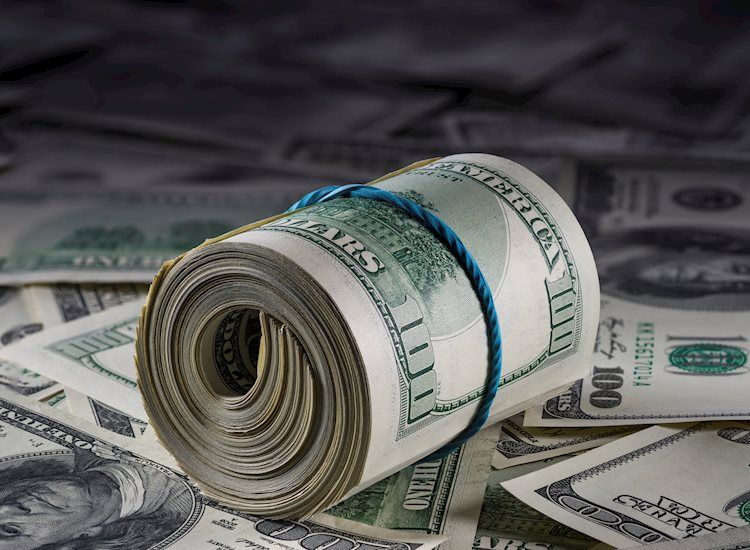
- The DXY started the week with mild gains.
- All eyes are set on Wednesday’s FOMC meeting.
- No relevant reports were released on Monday.
The US Dollar Index (DXY) trades at 103.55 on Monday, reflecting minor gains. Rising US Treasury yields also favored the favorable start of the week. All eyes are now on the Federal Reserve (Fed) decision on Wednesday and the updated economic projections.
The US economy is at a pivotal juncture as inflation remains sticky, while weak labor market data seem to be balancing investor expectations on the Fed’s timing for beginning the easing cycle. As for now, the first cut is seen in June.
- The Federal Reserve is projected to exercise patience before implementing policy easing, considering that there seem to be signs of US inflation progress slowing down.
- At present, the markets are predicting a 65% chance of a rate cut in June, with a full rate cut already considered in the projections for the July meeting.
- The updated Dot Plots will provide markets with additional guidance.
- Despite a recent dovish testimony by Powell, the majority of officials from the Federal Reserve express caution regarding premature monetary easing.
- US Treasury bond yields are rising with trading figures clocking in at 4.75% for the 2-year yield, 4.35% for the 5-year yield, and 4.33% for the 10-year yield.
In terms of the current technical outlook, the DXY’s momentum seems to be shifting in favor of bulls. The Relative Strength Index (RSI) jumped above 50, while the Moving Average Convergence Divergence (MACD) exhibits decreasing red bars, demonstrating a declining negative momentum.
That being said, the Dollar Index still resides below the 20,100 and 200-day Simple Moving Averages (SMAs). This shows the persisting dominance of bearish sentiment in a broader context. Despite indications of bulls gaining some ground, the current position suggests that selling power remains decidedly stronger.
Central banks FAQs
Central Banks have a key mandate which is making sure that there is price stability in a country or region. Economies are constantly facing inflation or deflation when prices for certain goods and services are fluctuating. Constant rising prices for the same goods means inflation, constant lowered prices for the same goods means deflation. It is the task of the central bank to keep the demand in line by tweaking its policy rate. For the biggest central banks like the US Federal Reserve (Fed), the European Central Bank (ECB) or the Bank of England (BoE), the mandate is to keep inflation close to 2%.
A central bank has one important tool at its disposal to get inflation higher or lower, and that is by tweaking its benchmark policy rate, commonly known as interest rate. On pre-communicated moments, the central bank will issue a statement with its policy rate and provide additional reasoning on why it is either remaining or changing (cutting or hiking) it. Local banks will adjust their savings and lending rates accordingly, which in turn will make it either harder or easier for people to earn on their savings or for companies to take out loans and make investments in their businesses. When the central bank hikes interest rates substantially, this is called monetary tightening. When it is cutting its benchmark rate, it is called monetary easing.
A central bank is often politically independent. Members of the central bank policy board are passing through a series of panels and hearings before being appointed to a policy board seat. Each member in that board often has a certain conviction on how the central bank should control inflation and the subsequent monetary policy. Members that want a very loose monetary policy, with low rates and cheap lending, to boost the economy substantially while being content to see inflation slightly above 2%, are called ‘doves’. Members that rather want to see higher rates to reward savings and want to keep a lit on inflation at all time are called ‘hawks’ and will not rest until inflation is at or just below 2%.
Normally, there is a chairman or president who leads each meeting, needs to create a consensus between the hawks or doves and has his or her final say when it would come down to a vote split to avoid a 50-50 tie on whether the current policy should be adjusted. The chairman will deliver speeches which often can be followed live, where the current monetary stance and outlook is being communicated. A central bank will try to push forward its monetary policy without triggering violent swings in rates, equities, or its currency. All members of the central bank will channel their stance toward the markets in advance of a policy meeting event. A few days before a policy meeting takes place until the new policy has been communicated, members are forbidden to talk publicly. This is called the blackout period.
